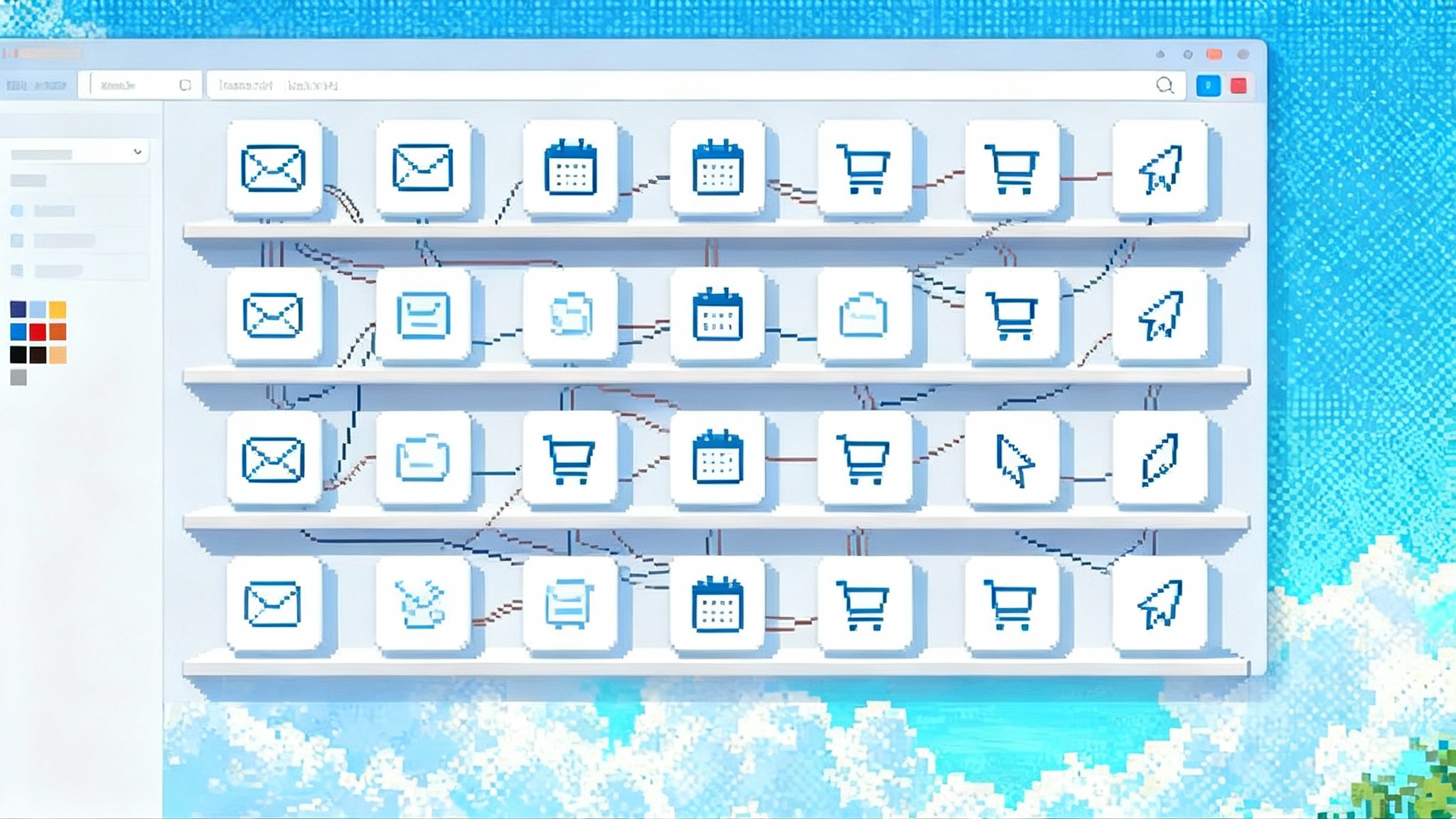From RAG Demos to Real Agents: Inside Vectara’s Agent API
Vectara's Agent API and Guardian Agent push enterprise AI beyond retrieval demos into audited, production-grade agents. We unpack changes, compare to OpenAI and AWS, and share playbooks, budgets, and guardrails for 2026 shipping.

The moment agents leave the lab
On September 10, 2025 Vectara announced the rollout of its Agent API, a Guardian Agent for hallucination control, and a polished chat interface that ships out of the box. The news matters because it reframes agents from a weekend proof of concept into something a startup can put in front of customers without hiring an entire platform team. The positioning is clear: grounded, traceable retrieval at the core, with evaluation and safety built in so teams can move from slideware to service.
If the last two years were dominated by retrieval augmented generation, then this fall is about retrieval plus autonomy. RAG anchored answers in your documents to reduce hallucinations. Agents add the discipline to plan multi step tasks, call tools, and justify what they did. Vectara’s bet is that enterprises do not just want a clever chatbot. They want a system that can show its work, explain why it cited a source, and prove it did not make things up.
For a first high stakes claim, see Vectara’s own description of the rollout of its Agent API. That announcement describes the Agent API, the Guardian Agent lineage, and the production chat UI as part of an end to end conversational solution for enterprise buyers.
What Vectara actually shipped
Think of the platform as three layers that map to how teams build and ship agents.
- Orchestration and reasoning: the Agent API defines agents as first class objects, including instructions, available tools, and step logic. Agents decide when to call a tool, when to ask follow up questions, and when to answer. The API exposes traces so engineers and auditors can reproduce behavior.
- Trust and correction: the Guardian Agent sits alongside the model. It checks outputs against retrieved sources, flags mismatches, and can correct text with minimal edits. Practically, this reduces the odds that a draft reaches a customer with fabricated facts. It also makes failure modes observable rather than mysterious.
- Interface and evals: the chat interface is wired to traces, so product and compliance teams can see the chain of thought at a level that is safe to expose, the tool calls, and the citations. Built in evaluation workflows let you score sessions by accuracy and groundedness on curated datasets before you roll out.
Vectara had shipped hallucination detection and correction in the spring, then folded that capability into a general guardian. The September release packages these pieces into a start to finish platform that a small team can adopt without standing up glue code. The documentation and public statements also reference early agent tech previews in September, which align with the launch timeline.
The big cloud comparison
OpenAI entered this lane with AgentKit in October 2025, a suite that combines a visual builder, an embeddable ChatKit interface, evaluation tools, and a connector registry. The pitch is speed and coherence inside the OpenAI stack. You design flows in a canvas, embed a pre built chat widget, and measure agent behavior in one place. For details, read the OpenAI AgentKit release overview.
Amazon Web Services has been articulating an agentic story through Bedrock AgentCore focused on long running sessions, enterprise grade observability, and deep identity integration. If your constraints include eight hour jobs, strict isolation, and CloudWatch native telemetry, AWS offers a well lit path.
So how is Vectara different for smaller teams?
-
Retrieval is the star, not a feature. Vectara’s value proposition starts with search that is built to be cited and audited, then layers agents on top. In big cloud stacks, retrieval is one tool among many. If most of your agent’s work is reading, ranking, and justifying, Vectara’s bias pays off.
-
Hallucination handling is integrated. Many frameworks offer guardrails as add ons. Vectara’s Guardian Agent is the default safety net, not an optional module. That default matters when you are moving quickly.
-
A usable front end arrives on day one. Shipping the chat interface with traces and citations reduces time to value. Teams can run user tests and evaluation cycles without building infrastructure first.
If you already rely on ChatGPT as your application surface, or on Bedrock’s governance model, staying within those ecosystems will feel natural. If you are a startup with a retrieval heavy workload and a small platform team, Vectara may help you ship sooner with fewer moving parts. For context on how agent capabilities change operating models, compare with our look at watch and learn agents rewriting operations.
Where agents meet product reality
Moving from a demo to a product is less about model cleverness and more about control surfaces. Three show up repeatedly in successful programs.
- Traces as first class artifacts. If you cannot replay an outcome, you cannot debug or certify it. Vectara’s decision to lift traces into the API and UI is pragmatic. It makes root cause analysis a function, not a quest.
- Groundedness you can measure. The Guardian Agent behaves like a proof checker that never tires. It does not eliminate risk, but it turns silent failures into observable events. That shift is what executives and regulators ask for.
- Interfaces that reduce the last mile. A polished chat interface mattered for the rise of conversational apps. It matters again for agentic ones because teams can evaluate, label, and iterate before burning weeks on front end plumbing.
These themes echo the broader shift from coding as the product to products built by prompt and policy. If that resonates, you will likely also appreciate the perspective in our analysis of coding by prompt with Agent 3.
Playbooks you can ship in 90 days
Below are three concrete use cases where a small team can make measurable progress this quarter. Each playbook lists the data you need, the architecture to deploy, the evaluation targets to track, and the risks to plan for.
1) Support search that closes tickets
Goal: resolve common issues without escalation, show traceable sources, and hand off gracefully when confidence drops.
- Data: product manuals, past tickets, knowledge base articles, release notes, and known error codes. Tag content with product, version, and customer tier so you can enforce visibility rules.
- Architecture: index documents in Vectara, enable reranking for long answers, and configure the Agent API with two tools: knowledge search and incident lookup. Add a policy that the agent asks a clarifying question when the top two results conflict.
- Guardian rules: require that answers include a citation and that any ungrounded sentence is masked or revised. If the guardian flags two or more ungrounded spans, the agent exits to human handoff with a full trace.
- Evals: measure grounded accuracy on a 200 example dataset that mixes happy path and edge cases. Track time to first token and time to answer, plus field metrics such as deflection rate and customer satisfaction.
- Targets: aim for 40 to 60 percent deflection on tier 1 categories, a median latency under 2.5 seconds for answers under 200 words, and zero answers without citations.
- Risks: stale knowledge. Set an index freshness policy so the agent prefers content updated in the last 90 days unless the user specifies a version.
2) Policy and compliance question answering
Goal: help employees interpret internal policies while enforcing boundaries and capturing an audit trail.
- Data: policy manuals, regional addenda, exception logs, regulator guidance, and precedent decisions. Tag by jurisdiction and effective date.
- Architecture: create tools for policy search, exception request intake, and policy registry lookup. Use the Agent API’s step logic to route questions by jurisdiction and to ask for the user’s role and location when information is missing.
- Guardian rules: enforce structured outputs. For example, responses must contain a short answer, the applicable policy section and date, and a risk note. The guardian validates that cited sections exist in the retrieved context and that the effective date predates the policy change.
- Evals: build a test set with real questions anonymized, then create a rubric that penalizes overconfident answers and rewards explicit uncertainty when correct. Track false permission grants as a zero tolerance metric.
- Targets: achieve 95 percent correct citation of policy sections and fewer than 1 percent cases where the agent suggests a non compliant action. Require human approval for any response that touches compensation, privacy, or safety.
- Risks: misuse of sensitive content. Integrate identity checks and row level access controls so the agent never retrieves documents outside the user’s clearance.
3) Legal research and drafting triage
Goal: accelerate first pass research and generate a structured brief that a lawyer can refine.
- Data: public statutes and regulations, firm memos, litigation outcomes, and templates. Tag with jurisdiction, matter type, and date.
- Architecture: give the agent three tools: legal corpus search, memo search, and a drafting tool that fills a template with structured fields. Use the Agent API to run a research step until a coverage threshold is met, then draft.
- Guardian rules: require parallel citations for every factual assertion and highlight any sections that cannot be directly tied to a retrieved source. Gate the final draft behind a human review step.
- Evals: measure recall of controlling authorities on a curated benchmark and count hallucinated citations. Track drafting time saved and redline volume in pilot matters.
- Targets: fewer than 0.5 percent broken or fabricated citations in offline evals and a 30 percent reduction in time to first draft in pilot teams.
- Risks: case drift across jurisdictions. Force the agent to confirm jurisdiction before drafting, and block cross jurisdiction mixing unless the user explicitly asks for persuasive authority.
Latency, cost, and reliability budgets that work in practice
Agents feel useful when they are fast and predictable. Set budgets and enforce them with timeouts and fallbacks.
- Latency budgets: break the experience into stages. Retrieval should complete in 300 to 800 milliseconds for most queries. Reranking adds 100 to 300 milliseconds when needed. Model reasoning often dominates time to answer. For interactive support, stream tokens and target first token under 1.2 seconds. For complex multi step reasoning, cap each plan step at 4 seconds and abort with a helpful partial answer if the budget is exceeded.
- Cost control: track tokens and tool calls per session. Use a short context window for follow ups, and summarize the running thread every few turns to keep costs bounded. Cache intermediate retrievals for repeated queries. Only rerank or call external tools when confidence is low or ambiguity is high.
- Reliability: design for graceful degradation. If a tool is down, the agent should say so, answer from known good context, and create a task for human follow up. Log every tool call, every retrieved chunk identifier, and every guardian decision for audit.
- Data refresh: stale indexes quietly break trust. Adopt a freshness policy by content type and schedule re indexing. For volatile content like release notes, set daily jobs. For stable policy manuals, set a monthly review.
A useful mental model is a relay race. Retrieval hands the baton to the model, the model hands it to tools, and the guardian runs the anchor leg that checks the finish. If any runner misses the handoff, you still want a finish time that keeps the customer on your site.
Governance you can explain to a regulator
Your board and your customers will ask two questions. What did the agent do, and why do you trust it. Build the answers into the system.
- Traceability: store event level traces with timestamps, tool inputs and outputs, and content identifiers for retrieval. Make them queryable by case ID and user. Redact secrets before logging.
- Policy enforcement: encode hard rules in code, not in prompts. Examples include jurisdiction checks, user role checks, and data residency constraints.
- Structured outputs: require schemas for responses so downstream systems can validate fields. The guardian can reject or fix outputs that do not match the schema.
- Human in the loop: define thresholds for mandatory review based on confidence, risk categories, or user segment. Capture reviewer feedback and feed it back into evaluation datasets.
- Incident response: when the agent makes a mistake, you need a playbook. Freeze the model and tool versions for the affected session, collect the trace, notify owners, and add a failing test case to your eval suite.
If your agents will connect to external tools via an open protocol, invest early in security and permissioning. For a deeper dive on why this layer matters as agent ecosystems mature, see our take on agentic security with MCP platform.
Build vs buy in 2026
- Choose Vectara when retrieval heavy tasks are the center of the product and you want hallucination defenses as a default. The end to end packaging and chat interface reduce integration time. You still get the flexibility to connect with Model Context Protocol tools and your internal systems.
- Choose OpenAI AgentKit when you are standardizing on ChatGPT as the primary surface, you need a visual workflow builder for non engineers, and you prefer a single vendor stack from model to evaluation to front end.
- Choose AWS AgentCore when long running jobs, strict isolation, identity federation, and CloudWatch native telemetry are hard requirements. You will get more knobs for enterprise scale operations.
None of these are mutually exclusive. Many teams will run a retrieval heavy assistant on Vectara, a marketing copilot in ChatGPT via AgentKit, and back office automations on Bedrock. What matters is an honest map of your constraints, not a single tool to rule them all.
A practical roadmap to shipping
Here is a four quarter plan that small teams can follow.
- Quarter 1: pick one use case, assemble 200 to 500 evaluation examples, and wire up the chat interface. Do not allow actions yet. Prove groundedness, latency, and satisfaction on internal users.
- Quarter 2: add one action at a time with human approval. Connect identity and governance. Ship to a small external cohort.
- Quarter 3: expand to two more use cases. Introduce budget and quota guards. Add targeted training data where evals show systematic misses.
- Quarter 4: remove manual approvals for low risk actions, keep them for high risk ones. Tie traces to analytics and customer success systems. Assert that every production regression creates a test.
By this time next year you will know whether your agent is a product or a prototype. The difference will not be the size of your model. It will be the presence of traces, guardians, and evaluations that turn retrieval into decisions your customers can trust. For a lens on how agent interfaces reach users in the real world, compare with our exploration of watch and learn agents rewriting operations and how prompt level control becomes product in coding by prompt with Agent 3.
The bottom line
The agent race is not only about reasoning. It is about proof. Vectara’s Agent API puts retrieval proof and output correction at the heart of the stack, while OpenAI and AWS offer strong options for teams already aligned to their ecosystems. If you set clear latency and cost budgets, insist on structured outputs, and keep evaluation data honest, you can ship agents that act, explain, and improve.








